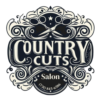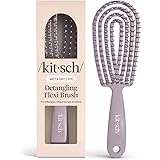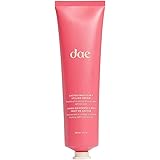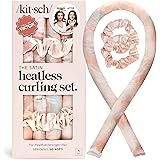Introduction to Keratin Treatments
Keratin treatments are specialized hair care procedures designed to smooth frizz and enhance the overall health of hair. Rooted in the use of keratin, a fibrous structural protein naturally found in hair, skin, and nails, these treatments aim to restore the essential protein that may be lost due to environmental factors, heat styling, and chemical treatments. The process involves applying a keratin-infused solution to the hair, followed by the application of heat to seal in the treatment, resulting in straightened and polished strands.
The primary purpose of keratin treatments is to address frizz and unruly hair texture. For individuals who struggle with coarse, wavy, or frizzy hair, these treatments provide a transformative solution that reduces curl pattern and frizz, making hair more manageable and easier to style. By filling the gaps in the hair cuticle, keratin improves the hair’s overall appearance, adding a sleek and shiny finish. This dual function not only enhances the style of the hair but also contributes to healthier hair by protecting it from damage.
In addition to frizz reduction, keratin treatments offer several benefits, including reduced styling time, increased moisture retention, and a significant decrease in hair breakage. The result is hair that not only looks radiant but also feels smoother and more resilient. As a result, those who undergo keratin treatments often enjoy long-lasting effects, with results typically lasting several weeks to months, depending on hair type and aftercare practices.
Overall, keratin treatments have gained popularity as a viable solution for individuals seeking to combat frizz and enhance the beauty of their hair. With the right treatment and care, they can achieve healthier, more manageable hair that radiates shine and vitality.
Understanding Frizzy Hair
Frizzy hair is a common concern that many individuals face, often resulting in frustration and a desire for smoother, more manageable locks. The causes of frizz are multifaceted, influenced by a combination of environmental factors, hair type, and hair damage. Understanding the underlying science of hair structure can provide insight into the phenomenon of frizz.
The primary structure of hair is made up of a protein called keratin, which forms the hair shaft. Each hair strand has three layers: the medulla (innermost), cortex (middle), and cuticle (outermost). The cuticle consists of overlapping scales that protect the inner layers. When these scales are raised or damaged, it can lead to the hair appearing frizzy. Humidity, for instance, can cause these cuticles to lift, allowing moisture to penetrate and swell the hair, leading to an unruly appearance.
Additionally, different hair types present varying degrees of susceptibility to frizz. Curly and wavy hair types are more prone to frizz due to their shape, which makes it challenging for the natural oils from the scalp to distribute evenly along the hair shaft. Conversely, straight hair typically experiences less frizz because its shape allows for a smoother surface. Genetic factors also play a significant role, as some individuals have naturally drier hair due to fewer oil glands.
Hair damage is another critical contributor to frizz. Factors such as excessive heat styling, chemical treatments, and environmental aggressors like sun exposure and pollution can compromise the hair’s cuticle integrity. This damage can result in increased porosity, leading hair to absorb excess moisture and swell, ultimately manifesting as frizz. Understanding these factors is essential for effective management and prevention strategies, particularly when considering treatments like keratin smoothing.
What is Keratin?
Keratin is a fibrous structural protein that forms a crucial component of hair, skin, and nails. This important protein is characterized by its strong and resilient properties, contributing to the overall strength and structure of these biological tissues. In hair, keratin plays a vital role in maintaining its health and integrity. The structure of keratin is fibrous and helical, which allows it to provide mechanical support and protection against various environmental factors.
The presence of keratin in hair serves multiple functions. Firstly, it provides a protective barrier that helps to shield hair from damage caused by heat, chemicals, and UV radiation. This defensive capability is essential for preserving the hair’s natural moisture and preventing excessive dryness, which can lead to frizz and breakage. Additionally, keratin contributes to the smoothness and shine of healthy hair, giving it a vibrant appearance.
Keratin itself is produced by specialized cells in the hair follicle, known as keratinocytes, which synthesize this protein during the hair growth process. As hair grows, it becomes keratinized, meaning that older cells are pushed out and transformed into hardened, protective structures. It is worth noting that the amount and quality of keratin can be influenced by various factors including genetics, diet, and environmental conditions. For example, lack of essential nutrients, such as proteins and vitamins, can weaken keratin production, leading to dull and fragile hair.
In professional hair care, keratin treatments have gained popularity as a means of enhancing the natural qualities of hair. These treatments often involve applying keratin-based formulas to temporarily smooth and soften hair, reducing frizz and enhancing manageability. Overall, understanding the role of keratin in hair structure highlights its importance in hair care and maintenance, serving as a fundamental component that ensures the strength, health, and resilience of our hair.
Types of Keratin Treatments
Keratin treatments have gained immense popularity for their ability to smooth frizzy hair and enhance shine. As a result, various options are available in salons, each with unique features and outcomes. Among these, Brazilian Blowouts are one of the most recognized treatments. This method focuses on sealing in moisture and creating a protective layer around the hair shaft, thereby reducing frizz while maintaining the natural wave and curl pattern. Typically, Brazilian Blowouts last for about three months and offer a customizable experience, allowing clients to maintain their desired amount of curl and volume.
Another prominent option is Keratin Complex. This treatment is known for its versatile formulation, which can be tailored to accommodate different hair types, including curly, wavy, and straight textures. Keratin Complex treatments generally involve the application of a keratin-infused solution followed by the sealing process with heat. This method effectively straightens hair while preserving its natural movement, yielding a softer, sleeker appearance for up to five months. Furthermore, Keratin Complex products are available for at-home maintenance, enabling clients to prolong their results.
Other brands offering keratin treatments include Global Keratin and Cezar’s Keratin. Global Keratin products are noted for their ability to eliminate frizz and improve manageability while providing an option for color-treated hair. Similarly, Cezar’s Keratin treatments focus on revitalization, offering intensive hydration while smoothing the hair structure. Each of these treatments presents its distinctive benefits and results, making it crucial for individuals to consult with professionals at salons to determine the most suitable option based on their hair type and desired outcome.
The Keratin Treatment Process
Keratin treatments are a popular choice for individuals looking to achieve smooth, frizz-free hair. Understanding the keratin treatment process can help ease any apprehensions and provide clearer expectations before deciding to undergo the treatment. This process generally involves several distinct steps: preparation, application, and post-treatment care.
The initial stage involves a thorough preparation of the hair. Professionals typically start by washing the hair with a clarifying shampoo designed to remove product buildup and enhance the treatment’s efficacy. It is essential that the hair is completely clean, as this allows the keratin solution to penetrate the hair shaft more effectively. After washing, the stylist will gently towel-dry the hair to eliminate excess moisture, setting the stage for the next step.
Once the hair is prepared, the application of the keratin solution begins. The stylist usually sections the hair for a more uniform application. The keratin mixture is carefully applied from roots to ends, ensuring every strand is coated. This step may take some time, depending on the hair’s length and thickness. After the solution is applied, the stylist typically uses a flat iron to seal the keratin into the hair. The heat helps activate the keratin, ensuring that it bonds effectively, which is crucial for attaining the desired smoothness and shine.
The final phase involves post-treatment care. After the keratin has been sealed, the stylist will usually provide specific instructions regarding care to maintain the treatment’s results. Clients are typically advised to avoid washing their hair for a minimum of 48 hours to allow the keratin to fully set. Furthermore, using sulfate-free shampoos and conditioners is highly recommended to prolong the treatment’s longevity.
Benefits of Keratin Treatments for Frizzy Hair
Keratin treatments have gained significant popularity in the realm of hair care, particularly for individuals seeking solutions to combat frizz. One of the primary advantages of these treatments is their ability to effectively reduce frizz. The formulation of keratin, a natural protein found in hair, works to smooth the hair cuticle, leading to a sleeker and more manageable appearance. As a result, frizzy hair can appear less chaotic and more refined.
In addition to frizz reduction, keratin treatments also enhance the overall shine of hair. When the cuticle is smoothed and sealed, light reflects more evenly across the hair strands, creating a glossier finish. This is especially beneficial for those with dry or damaged hair, as the added shine can impart a healthier look. The revitalized appearance not only boosts self-esteem but also transforms the hair into a stunning feature of one’s overall style.
Moreover, keratin treatments significantly improve hair manageability. Many individuals with frizzy hair contend with the daily challenges of styling and taming their locks. A keratin treatment can simplify hair care routines by reducing the time and effort required to achieve desired styles. Users often find that they can wash and go with minimal fuss, resulting in a more enjoyable hair care experience.
Lastly, keratin treatments offer long-lasting effects, making them a worthwhile investment for anyone struggling with frizz. Depending on the specific product and individual hair type, the benefits can last anywhere from several weeks to a few months. This longevity allows individuals to maintain a polished look without constant upkeep, further establishing keratin treatments as a favored option for managing frizzy hair.
Potential Risks and Concerns
While keratin treatments offer significant benefits for managing frizzy hair and achieving smoothness, it is essential to consider the potential risks associated with these procedures. One of the primary concerns is chemical exposure. Many keratin treatments contain formaldehyde or formaldehyde-releasing agents, which can pose health risks when inhaled during the application process. Prolonged exposure may lead to respiratory issues, skin irritation, and other health complications. Clients should ensure that salons use formaldehyde-free products or those that contain very low levels of the chemical to minimize risks.
Another critical concern is the potential for allergic reactions. Individuals who are sensitive to specific ingredients in keratin formulations might experience adverse effects, such as itching, redness, or swelling. It is advisable for clients to conduct a patch test prior to undergoing full treatment; this can help identify any allergic reactions to the substances used. If any discomfort occurs during the patch test, it is crucial to inform the stylist and avoid the treatment altogether.
To choose a safe keratin treatment, clients should conduct thorough research on the product ingredients and their respective safety profiles. Additionally, seeking recommendations from trusted sources or reading online reviews can provide valuable insight into reputable salons and practitioners. It is advisable to consult with a certified stylist who can explain the differences between available treatments and suggest the most suitable option based on individual hair type and concerns. By taking these precautions, clients can enjoy the smoothing benefits of keratin treatments while minimizing potential health risks.
Aftercare for Keratin-Treated Hair
After undergoing a keratin treatment, maintaining the health and beauty of your hair is essential for prolonging the results achieved. One of the fundamental aftercare guidelines is to avoid washing your hair for at least 72 hours post-treatment. This waiting period allows the keratin to bond effectively with the hair fibers, ensuring optimal smoothness and shine.
When it’s time to wash your hair, utilize sulfate-free shampoos and conditioners. Sulfates may strip the hair of its essential oils and diminish the effects of the keratin treatment. Look for products specifically designed for keratin-treated hair, as these formulations help maintain the integrity of your treatment while also enhancing manageability. Additionally, choose hydrating products that replenish moisture, ensuring that your locks remain nourished and smooth.
Another vital aspect of keratin aftercare involves limiting the frequency of washes. Ideally, aim to wash your hair no more than two to three times a week. This practice helps retain the natural oils and prevents excess frizz from forming. When drying your hair, gently blot it with a towel instead of rubbing it vigorously, as rough treatment can lead to damage. Air drying is preferable, but if heat styling is necessary, allow your hair to air-dry until it’s about 80% dry before applying heat styling tools.
Direct exposure to saltwater or chlorinated water can negatively impact keratin-treated hair. Therefore, if you plan to swim, consider applying a protective leave-in conditioner before entering the water. Moreover, avoid tight hairstyles that may cause tension on the hair strands, and minimize sun exposure by wearing a hat or using a UV protectant spray. By following these care tips diligently, you can maintain the smoothness and health of your keratin-treated hair for an extended period.
How Long Do Keratin Treatments Last?
Keratin treatments have become increasingly popular in recent years, particularly for individuals seeking to manage frizzy hair. The longevity of these treatments can vary significantly based on several factors, including the type of treatment applied, hair type, and aftercare practices. Generally, keratin treatments can last anywhere from three to six months. However, some specialized formulas may provide results for up to a year.
One primary factor influencing the duration of a keratin treatment is the hair’s condition prior to the application. Hair that has been previously chemically treated or damaged may absorb the keratin differently, resulting in a shorter duration of effectiveness. Additionally, the thickness and texture of the hair can also play a critical role. Thinner or finer hair may show the effects of keratin treatments for a shorter time compared to thicker, coarser strands, which might hold the treatment longer.
Another crucial consideration is the maintenance routine following the treatment. Using sulfate-free shampoos, minimizing exposure to heat styling tools, and avoiding harsh hair care products can significantly extend the life of the keratin treatment. Moreover, it is advisable to limit the frequency of hair washing, as too much washing can reduce the treatment’s longevity. Furthermore, protecting the hair from excessive moisture or humidity can enhance the results, especially in regions with high humidity levels.
In conclusion, while the average duration of keratin treatments varies, proper care and maintenance are essential to prolonging their effects. By considering hair type and implementing appropriate post-treatment practices, individuals can enjoy smoother, frizz-free hair for an extended period, making keratin treatments a worthwhile investment in hair care.
Cost of Keratin Treatments
Keratin treatments have gained immense popularity as effective solutions for frizzy hair, and understanding their costs is essential for potential clients. On average, the price for a keratin treatment can range from $200 to $500, depending on various factors. These factors encompass the salon’s geographic location, the stylist’s experience, and the specific products utilized during the treatment process.
Firstly, location plays a significant role in determining the price. Salons situated in urban areas or affluent neighborhoods often charge higher rates due to increased overhead costs and a demand for premium services. Conversely, smaller towns may offer more competitive pricing. Additionally, the expertise of the stylist can impact the overall cost; experienced professionals who specialize in keratin treatments may command higher fees due to their proficiency and the quality of results they deliver.
The type of keratin product used is another critical factor affecting pricing. Different formulations, such as formaldehyde-free options or various brands, come with their own price points. Some salons may also offer a range of treatments with varying levels of intensity, which can further influence the overall cost.
When budgeting for keratin treatments, clients should consider not only the immediate costs but also aftercare products. It is advisable to invest in sulfate-free shampoos and conditioners that help prolong the treatment’s effects and maintain smoother locks over time. Moreover, some salons may require clients to schedule follow-up appointments or touch-ups, which should be factored into the budget. Evaluating these elements can help clients make informed decisions and choose the keratin treatment that best aligns with their financial considerations and hair care goals.
DIY Keratin Treatments: Are They Effective?
In recent years, the popularity of at-home keratin treatments has surged dramatically. Many individuals seek to achieve smooth, frizz-free hair without the significant costs associated with professional salon services. The allure of DIY keratin treatments often lies in their convenience and affordability, but the key question remains: are they effective?
At-home keratin treatments typically utilize formulations that contain varying levels of keratin, along with other ingredients designed to smooth hair cuticles and reduce frizz. While these kits can offer some immediate benefits, the results often differ from those achieved in a salon setting. Professional treatments, conducted by trained stylists, often utilize higher concentrations of keratin and advanced application techniques that can lead to longer-lasting smoothness and shine.
The effectiveness of DIY keratin treatments can also vary significantly based on hair type. For individuals with fine or straight hair, these home kits may provide satisfactory results, leading to a more manageable texture without excessive frizz. However, those with thicker, coarser hair may find that the results are less impressive, requiring more frequent applications to maintain a sleek appearance. It is also important to note that some consumers have reported issues such as hair damage or adverse reactions due to the presence of formaldehyde or other harsh chemicals in certain products.
Additionally, users should carefully follow the instructions provided with DIY kits to maximize their effectiveness. This includes ensuring proper application techniques, timing, and post-treatment care strategies. Consulting reviews and feedback from others who have used the same products can also provide valuable insights into expected outcomes. Ultimately, while DIY keratin treatments may offer a temporary solution for managing frizz, their effectiveness compared to salon treatments can be inconsistent and largely dependent on individual hair characteristics.
Choosing the Right Keratin Treatment for Your Hair Type
Selecting the appropriate keratin treatment is crucial for achieving optimal results while maintaining the health of your hair. Various keratin treatments are designed to cater to different hair types, textures, and specific concerns such as damage or curl patterns. Understanding your specific hair needs will enable you to make an informed decision that promotes a smooth and manageable style.
Firstly, it is essential to identify your hair type. For instance, those with fine or straight hair may benefit from lighter formulations that provide a subtle smoothing effect without weighing the hair down. On the other hand, individuals with thick, curly, or coarse hair typically require more intensive treatments that effectively tame frizz and reduce curliness. There are also treatments formulated specifically for color-treated hair, ensuring that the keratin application does not compromise the vibrancy of existing color.
In addition to hair type, one must consider the level of damage present. If your hair is severely damaged due to chemical treatments, heat styling, or environmental factors, opting for a keratin treatment that includes conditioning ingredients is advisable. These formulations often help repair and strengthen the hair, allowing for smoother results. Conversely, those with little to no damage may opt for less intensive products focused on frizz reduction rather than deep repair.
Curl pattern is another aspect to take into account when choosing a keratin treatment. Some treatments are better suited for maintaining waves and curls while still smoothing the overall texture, while others may completely straighten the hair. Researching the specific treatment and its effect on different curl patterns will help ensure that you achieve your desired look without sacrificing natural texture.
Ultimately, consulting with a professional stylist who has experience with keratin treatments can provide personalized recommendations based on your individual hair characteristics. By carefully selecting the right treatment for your hair type, texture, and needs, you will maximize the benefits of keratin, resulting in healthier, smoother hair that is easier to manage.
Maintaining Frizz-Free Hair Between Treatments
To preserve the benefits of keratin treatments and keep hair smooth and frizz-free, it is essential to adopt appropriate maintenance practices. The right styling techniques and products play a crucial role in ensuring the longevity of a keratin treatment. One effective method is to invest in sulfate-free shampoos and conditioners. Sulfate can strip the hair of its natural oils and may weaken the keratin, leading to faster wear-off of the treatment. Instead, look for products labeled as “keratin-infused” or specifically designed for treated hair. These will help maintain moisture and keep the cuticle smooth.
Another essential tip for maintaining frizz-free hair is to minimize heat exposure. While styling tools such as hair dryers and flat irons can provide a polished look, they can also contribute to damage over time. Using a heat protectant spray can mitigate this risk. Additionally, opting for air-drying rather than blow-drying is a favorable choice, as this reduces heat exposure and allows the hair to maintain its natural structure.
Utilizing a wide-tooth comb instead of a conventional brush when detangling wet hair is advisable. This technique minimizes breakage and helps maintain hair integrity. When styling, consider using smoothing serums or creams that contain beneficial oils, such as argan or coconut oil. These products can add moisture and shine while creating a protective barrier against humidity, one of the primary causes of frizz.
Finally, regular trims are vital for managing split ends and maintaining the overall health of the hair. Scheduling visits to the salon every six to eight weeks can prevent damage from spreading, ensuring that the keratin treatment’s effects remain noticeable for longer periods. By incorporating these strategies, individuals can enjoy frizz-free hair well beyond their keratin treatment appointments.
Natural Alternatives to Keratin Treatments
As the quest for smooth and manageable hair continues, many individuals are exploring natural alternatives to keratin treatments. These alternatives often leverage the power of oils, masks, and other treatments that can effectively reduce frizz without the use of harsh chemicals typically found in keratin formulas. One of the most popular options is natural oils such as argan oil, coconut oil, and jojoba oil. These oils not only help to moisturize and nourish the hair but also provide a protective barrier against humidity, which is a leading cause of frizz.
Argan oil, often referred to as “liquid gold,” is rich in essential fatty acids and Vitamin E. Its lightweight consistency allows for easy absorption into the hair shaft, offering hydration while promoting shine. When applied regularly, it can significantly tame unruly strands and protect against heat damage. On the other hand, coconut oil penetrates deeper into the hair, providing intense moisture that assists in preventing breakage and frizz. To make the most of these oils, individuals can apply them as a leave-in conditioner or use them in DIY hair masks for added nourishment.
In addition to oils, homemade hair masks made from natural ingredients can serve as effective smoothing treatments. Ingredients such as avocado, honey, and banana can be blended together to create a hydrating mask that targets frizz. Avocado, packed with vitamins and healthy fats, helps to moisturize the hair, while honey acts as a natural humectant, drawing moisture to the hair and locking it in. Regular use of these masks can enhance hair texture and contribute to smoother, frizz-free locks over time.
Utilizing these natural alternatives not only reduces frizz but also promotes overall hair health. They are often more accessible and less damaging than traditional keratin treatments, making them an appealing option for those seeking a gentler approach to hair care.
Personal Experiences: Testimonials from Keratin Treatment Users
Keratin treatments have become increasingly popular as a solution for frizzy hair, and many individuals have shared their experiences, showcasing varied results. These testimonials often highlight not only the positive transformations but also the challenges faced during and after the treatments. For instance, several users have reported a significant reduction in frizz and an increase in shine and manageability post-treatment. Many noted that the application of keratin resulted in smoother and straighter locks, allowing for easier styling in everyday routines.
One user described her experience as transformative, stating, “I used to spend hours battling my curly hair every morning. After a keratin treatment, my hair became so much easier to manage, and I could style it in minutes. The smoothness lasted for months!” Such accounts reflect the effectiveness of keratin in changing hair texture and rendering a more polished appearance. However, satisfaction levels can vary based on individual hair types and the specific keratin products used.
Despite numerous positive testimonials, some users have voiced challenges associated with keratin treatments. A certain segment of individuals experienced issues such as product buildup and the need for specific hair care products to maintain results. As one user pointed out, “While I loved the results initially, I had to invest in sulfate-free shampoos to prolong the effect. It was a bit of an adjustment in my hair care routine.” Additionally, there are reports of chemical sensitivity in some cases, emphasizing the importance of consulting with professionals regarding potential allergic reactions.
Overall, personal experiences with keratin treatments reflect a spectrum of outcomes, from dramatic enhancements in hair texture to the required adjustments in post-treatment care. These testimonials provide valuable insights for potential users considering whether a keratin treatment might be the right choice for their frizzy hair concerns.
The Environmental Impact of Keratin Treatments
Keratin treatments have gained considerable popularity for their ability to smooth frizzy hair and create a polished appearance. However, the environmental implications of these beauty practices merit critical examination. Central to this discussion is the presence of various chemicals utilized in these treatments, some of which can have detrimental effects on the environment both during and after application.
Many keratin treatments contain formaldehyde or related compounds, which are used to achieve the desired straightening effects. The release of these chemicals into the atmosphere can contribute to air pollution, raising health concerns for both practitioners and consumers. Moreover, improper disposal of excess product often leads to chemical waste entering waterways, thus impacting aquatic ecosystems. This underscores the need for a careful approach in assessing the chemical makeup of hair treatments and their broader implications.
In addition to air and water pollution, the production processes of keratin treatments often lack sustainability. The sourcing of materials can contribute to environmental degradation, as certain keratin derivatives are derived from animal products. This raises ethical considerations regarding animal welfare and the overall sustainability of such beauty products. As consumers become more conscious of their choices, the beauty industry is increasingly under pressure to adopt eco-friendly formulations that minimize environmental harm.
In light of these issues, the beauty industry has started to shift toward more sustainable practices. This involves the development of formaldehyde-free keratin treatments and a focus on biodegradable ingredients. Brands are also re-evaluating their packaging and production processes to reduce their carbon footprint. By embracing these practices, the keratin treatment segment of the beauty industry can work toward a more sustainable future that aligns with consumers’ growing demand for environmentally responsible products.
Expert Opinions: Hair Stylists on Keratin Treatments
Keratin treatments have gained immense popularity in the hair care industry, especially for individuals struggling with frizzy hair. To better understand the efficacy of these treatments, we consulted several professional hairstylists who frequently work with keratin-based products. According to them, these treatments not only provide a smoothing effect but also enhance the overall health and manageability of hair. The stylists emphasized the importance of proper consultation before proceeding with a keratin treatment, as each client’s hair type and condition can significantly influence the results.
One key piece of advice from seasoned hairstylists is to ensure that clients have realistic expectations. Many people believe keratin treatments offer a permanent solution to frizziness; however, hairstylists note that while they do provide long-lasting results, the effects typically last between three to six months, depending on the individual’s hair care routine and lifestyle. Common misconceptions include the belief that keratin treatment is equivalent to chemical straightening. In reality, keratin treatments focus on coating the hair with a protective layer, rather than altering its structure.
Hair professionals also recommend certain aftercare practices to maintain the treatment’s effects. For instance, using sulfate-free shampoos is crucial as sulfates can strip away the keratin and lead to faster fading of the results. Additionally, avoiding excessive heat styling can further prolong the benefits of the treatment. Clients are encouraged to discuss their unique hair concerns with their stylist and explore the specific products that would be best suited for their hair type post-treatment.
Ultimately, hairstylists advocate for keratin treatments when performed by certified professionals, as they can significantly enhance the texture and appearance of frizzy hair while educating clients on the importance of ongoing hair care. This collaboration between the stylist and the client leads to optimal results, ensuring that individuals leave the salon satisfied with their smooth, sleek hair.
Future Trends in Hair Smoothing Treatments
The landscape of hair smoothing treatments is evolving rapidly, driven by both technological advancements and a growing consumer demand for healthier hair care options. As awareness around the use of potentially harmful chemicals increases, the industry is witnessing a shift towards more organic and environmentally friendly formulations. This trend indicates a future where keratin treatments, traditionally reliant on strong, sometimes harsh chemicals, may shift towards gentler alternatives that still deliver effective results.
One of the most notable advancements is the development of innovative formulations that integrate natural ingredients. Brands are reformulating their products to include botanical extracts and essential oils, which not only promote smoothness but also nourish and strengthen the hair. This approach is gaining traction among consumers who prioritize healthy hair over mere aesthetics. Hair smoothing treatments that incorporate ingredients such as argan oil or coconut oil are becoming increasingly popular, as they not only enhance shine but also improve overall hair health.
Technological advancements in application techniques are also shaping the future of keratin treatments. For example, the introduction of steam infusion methods helps to better penetrate hair cuticles, allowing for deeper conditioning and more effective smoothing. Such techniques also aim to reduce the exposure to chemicals by minimizing the necessity for high heat during treatment. As a result, salons are likely to adopt these modern methods, ensuring a safer and more efficient service.
Moreover, the trend towards customization is becoming increasingly prevalent. Consumers are now seeking tailored smoothing treatments that cater to their unique hair types and individual needs. As a response, many brands and salons are investing in diagnostic tools and user-friendly consultations to curate bespoke solutions. This personalized approach represents a significant shift in the hair care industry, placing emphasis on individualized results over one-size-fits-all solutions.
Conclusion: Is a Keratin Treatment Right for You?
Keratin treatments have become increasingly popular as a solution for managing frizzy hair and achieving smooth, sleek locks. However, whether a keratin treatment is suitable for an individual largely depends on various factors, including hair type, texture, and personal preferences. It is essential for customers to consider these elements before making the decision to undergo such a treatment.
First and foremost, individuals with coarse, curly, or overly frizzy hair may find significant benefits from a keratin treatment. The treatment works by infusing hair with a concentrated dose of keratin, a protein that makes up the structure of hair. This can lead to a noticeable reduction in frizz and enhanced manageability. However, those with fine or thin hair should approach with caution; while a treatment could improve the appearance, it may also weigh hair down, leading to a loss of volume.
Additionally, one’s lifestyle plays a critical role in assessing the suitability of keratin treatments. For those who frequently expose their hair to heat styling, humidity, or environmental stressors, a keratin treatment can provide a layer of protection and prolong the smoothness achieved. However, individuals who prefer a more natural look or have chemically treated hair must evaluate the potential risks, as the treatment could alter the existing state of their hair.
Finally, financial considerations cannot be overlooked. Keratin treatments often come with a significant cost, and maintenance sessions may be required every few months to sustain the desired effect. Therefore, assessing the long-term commitment to hair care is crucial. In conclusion, evaluating individual hair needs, lifestyle choices, and financial feasibility will assist potential candidates in determining if a keratin treatment is the right option for them.






